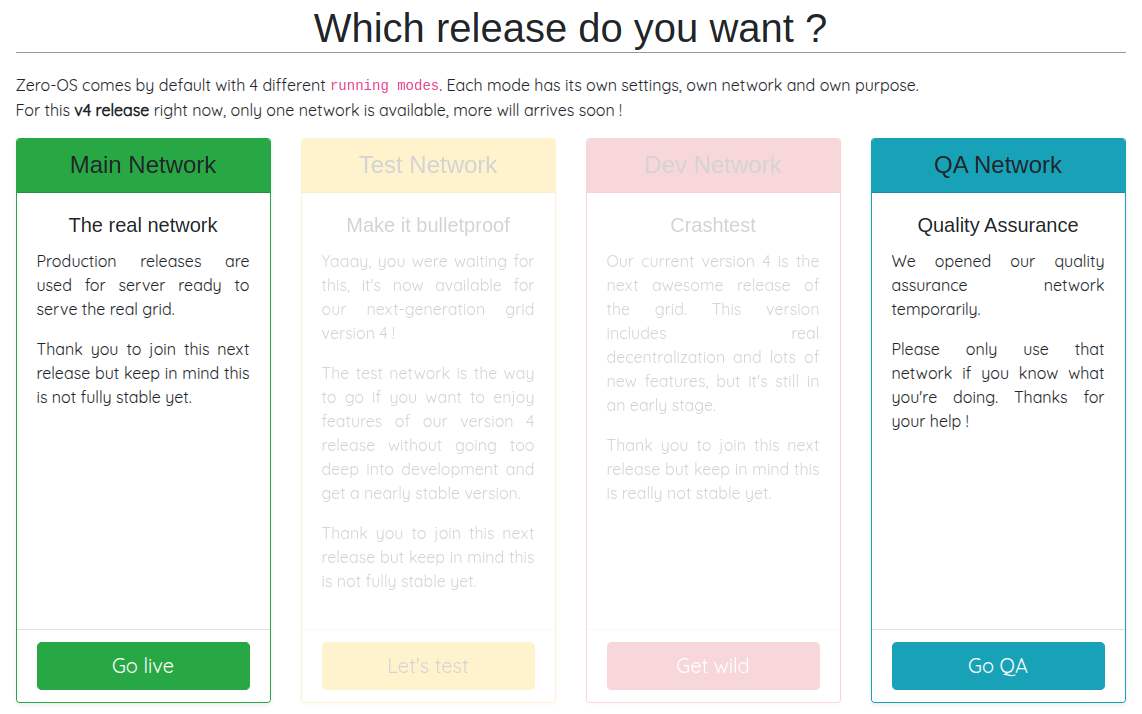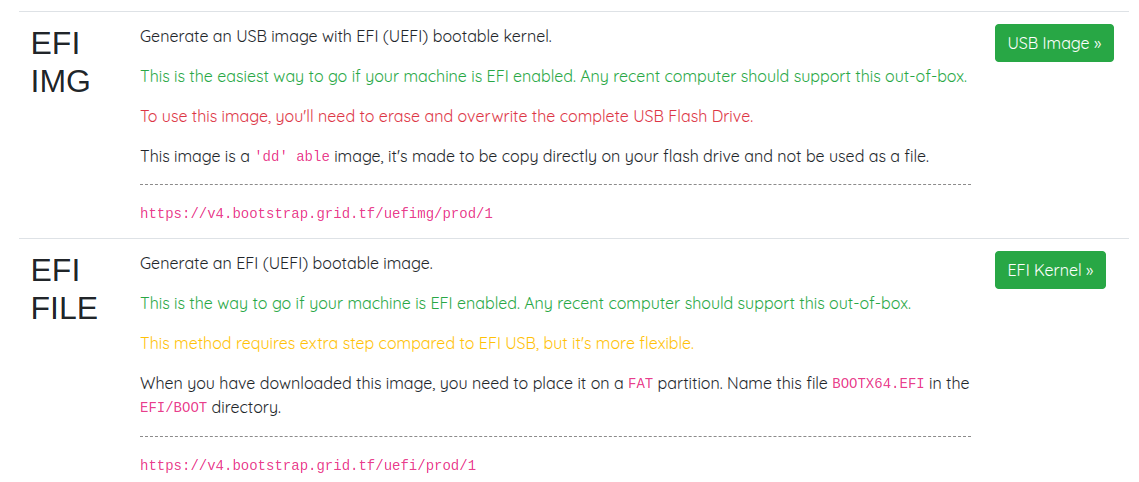2. Create a Zero-OS Bootstrap Image
We will now learn how to create a Zero-OS bootstrap image in order to boot a DIY 3Node.
Download the Zero-OS Bootstrap Image
Let's download the Zero-OS bootstrap image via the Zero-OS Boot Generator for Grid V4: https://v4.bootstrap.grid.tf

On the Boot Generator page, write your farm ID and choose Production mode to deploy on mainnet.

Choose a bootstrap image format to download.
If your system is new, choose an image format for a UEFI bootable kernel. You can use either EFI IMG or EFI FILE.
EFI IMG- Burn this image with BalenaEtcher. See below for more info.
EFI FILE- Format the USB to one
FATpartition and save the bootstrap image as/EFI/BOOT/BOOTX64.EFI.
- Format the USB to one

For older systems, choose an image format for a BIOS bootable kernel.
- For BIOS CD/DVD, choose ISO.
- For BIOS USB, choose USB.

Next, we cover in details how to burn the bootstrap image.
Burn the Zero-OS Bootstrap Image
We show how to burn the Zero-OS bootstrap image. A quick and modern way is to burn the bootstrap image on a USB key.
USB Key BIOS+UEFI
There are many ways to burn the bootstrap image on a USB key. The easiest way that works for all operating systems is to use BalenaEtcher. We also provide other methods.
BalenaEtcher (MAC, Linux, Windows)
For MAC, Linux and Windows, you can use BalenaEtcher to flash the image on a USB key. This program also formats the USB in the process. This will work for the option EFI IMG for UEFI boot, and with the option USB for BIOS boot. Simply follow the steps presented to you and make sure you select the bootstrap image file you downloaded previously.
Note: There are alternatives to BalenaEtcher (e.g. usbimager for Windows, MAC and Linux, and Rufus for Windows).
General Steps with BalenaEtcher:
- Download BalenaEtcher
- Open BalenaEtcher
- Select Flash from file
- Find and select the bootstrap image (with your correct farm ID)
- Select Target (your USB key)
- Select Flash
That's it. Now you have a bootstrap image on Zero-OS as a bootable removable media device.
CLI (Linux)
For the BIOS USB and the UEFI EFI IMG images, you can do the following on Linux:
sudo dd status=progress if=FILELOCATION.ISO(or .IMG) of=/dev/sdX
Simply replace X by the proper disk for your USB key. To see your disks, write lsblk in the command line. Make sure you select the proper disk!
If you USB key is not new, make sure to format it before burning the Zero-OS image.
CD/DVD BIOS
For the BIOS ISO image, download the file and burn it on a DVD.